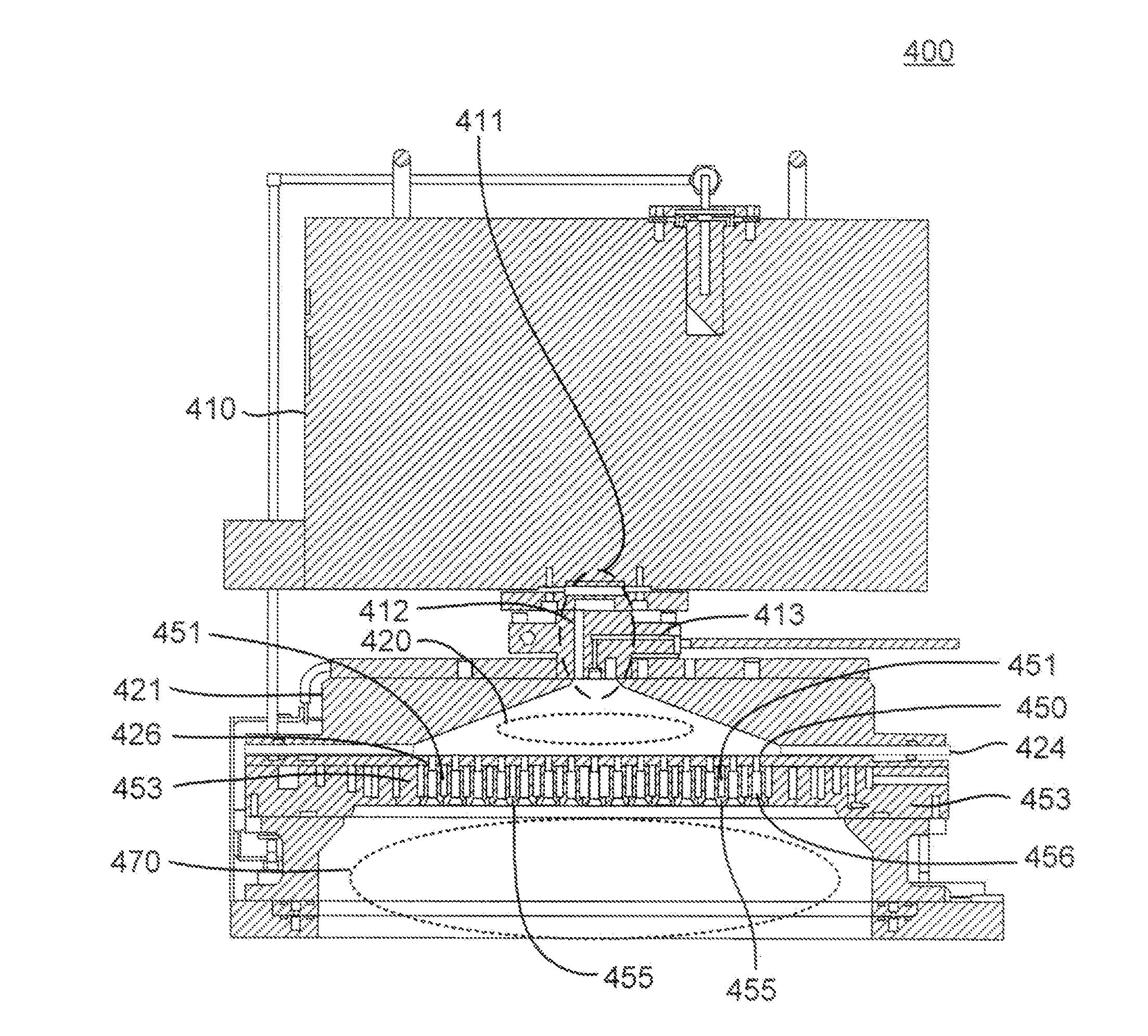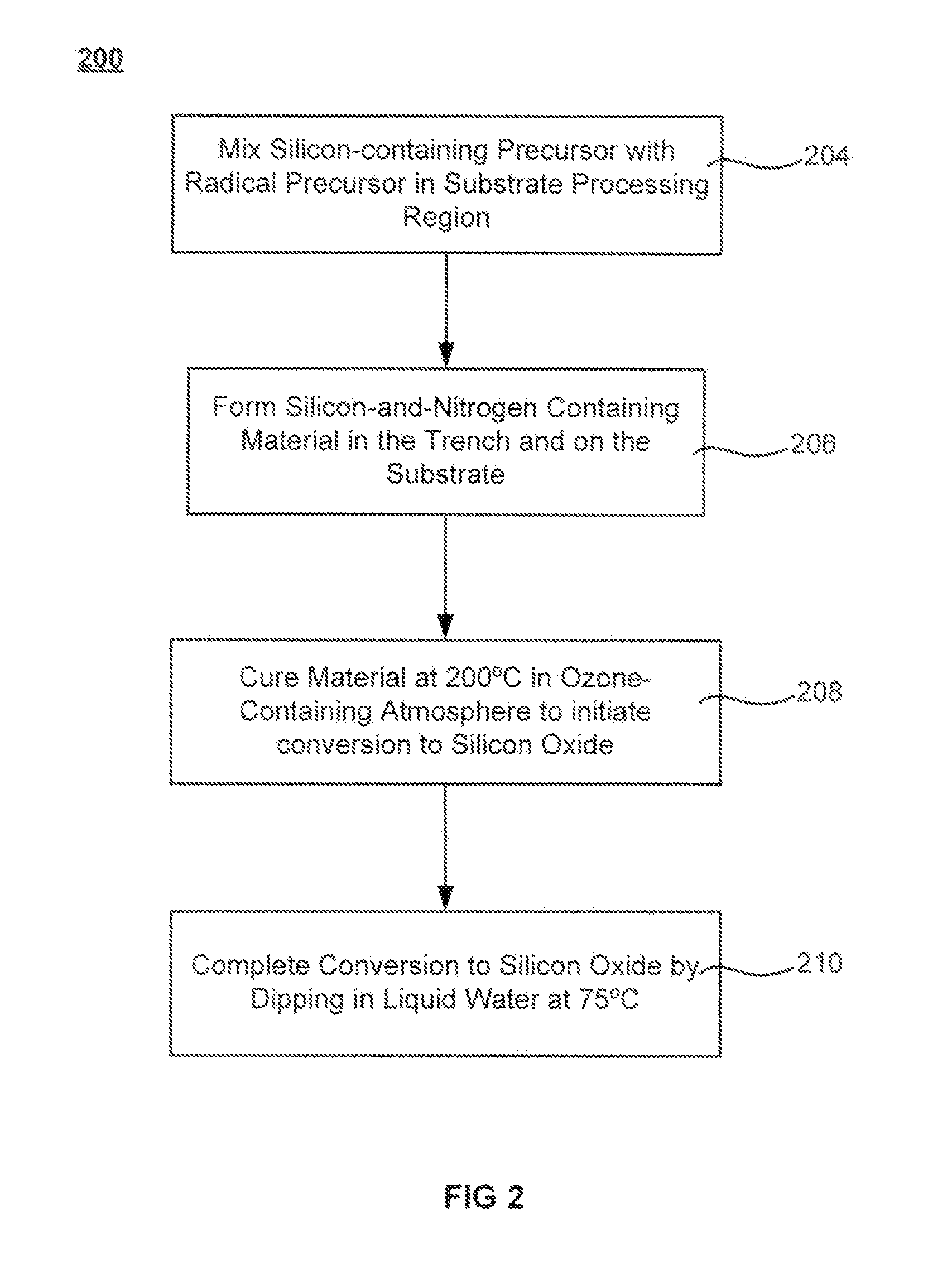Low temperature silicon oxide conversion
a technology of silicon oxide and conversion temperature, applied in the field of low temperature silicon oxide conversion, can solve the problems of dielectric material, dielectric material, and reduced structural features of the device, and achieve the effect of reducing the spatial dimension of the device, and reducing the cost of dielectric material
- Summary
- Abstract
- Description
- Claims
- Application Information
AI Technical Summary
Benefits of technology
Problems solved by technology
Method used
Image
Examples
Embodiment Construction
[0017]A method of forming a silicon oxide layer is described. The method first deposits a silicon-nitrogen-and-hydrogen-containing (polysilazane) film by radical-component chemical vapor deposition (CVD). The polysilazane film is converted to silicon oxide by exposing the polysilazane film to humidity at low substrate temperature. The polysilazane film may also be dipped in a liquid having both oxygen and hydrogen, such as water, hydrogen peroxide and or ammonium hydroxide. These conversion techniques may be used separately or in a sequential combination. Conversion techniques described herein hasten conversion, produce manufacturing-worthy films and remove the requirement of a high temperature oxidation treatment. An ozone treatment may precede the conversion technique(s).
[0018]Exposing a radical-component CVD silicon-nitrogen-and-hydrogen-containing film to a humid atmosphere has been found to accelerate the completion of the transition to silicon oxide as determined by fourier tr...
PUM
| Property | Measurement | Unit |
|---|---|---|
| temperature | aaaaa | aaaaa |
| temperature | aaaaa | aaaaa |
| temperature | aaaaa | aaaaa |
Abstract
Description
Claims
Application Information
 Login to View More
Login to View More - R&D
- Intellectual Property
- Life Sciences
- Materials
- Tech Scout
- Unparalleled Data Quality
- Higher Quality Content
- 60% Fewer Hallucinations
Browse by: Latest US Patents, China's latest patents, Technical Efficacy Thesaurus, Application Domain, Technology Topic, Popular Technical Reports.
© 2025 PatSnap. All rights reserved.Legal|Privacy policy|Modern Slavery Act Transparency Statement|Sitemap|About US| Contact US: help@patsnap.com



